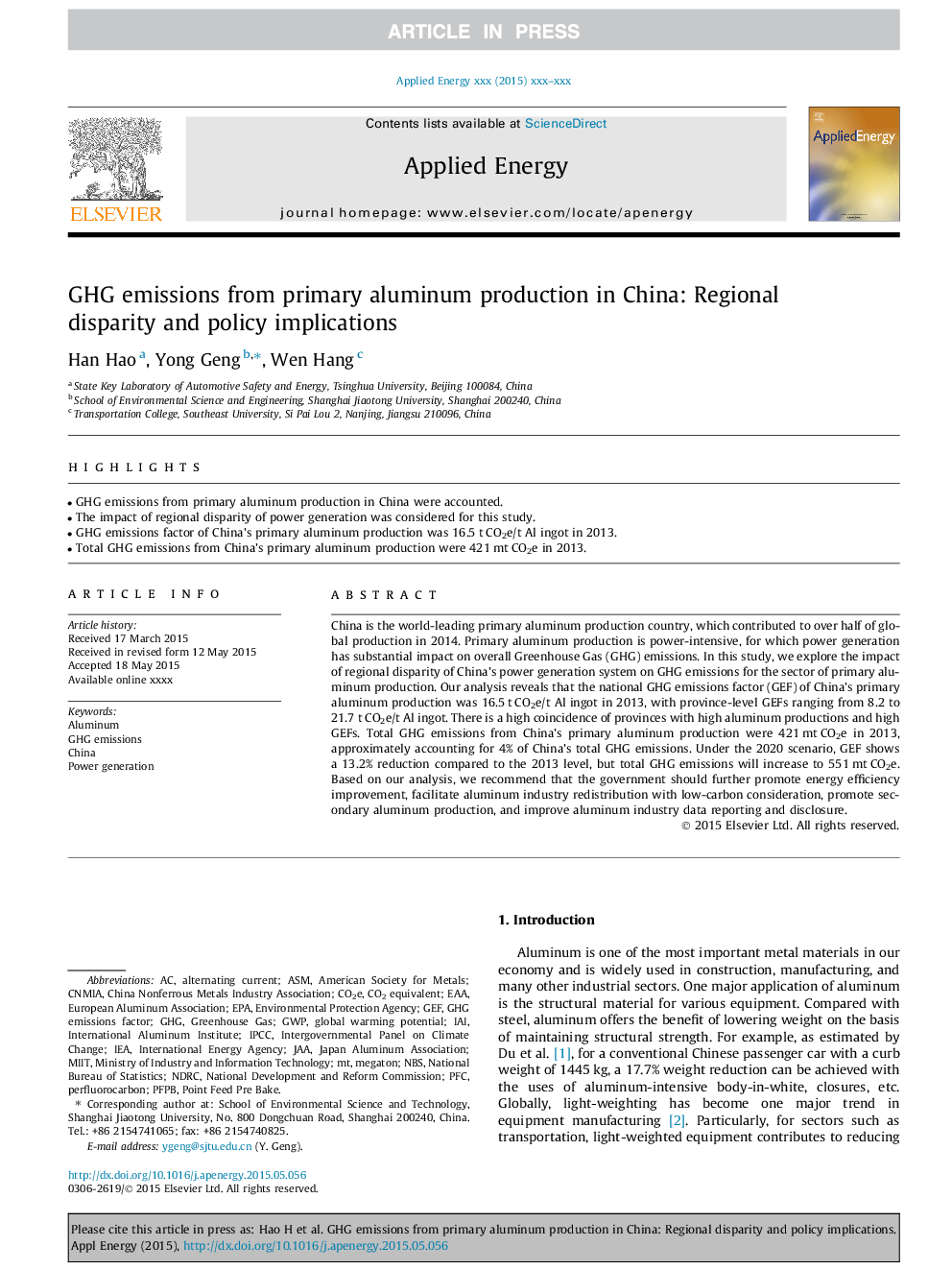| Article ID | Journal | Published Year | Pages | File Type |
|---|---|---|---|---|
| 6683875 | Applied Energy | 2016 | 9 Pages |
Abstract
China is the world-leading primary aluminum production country, which contributed to over half of global production in 2014. Primary aluminum production is power-intensive, for which power generation has substantial impact on overall Greenhouse Gas (GHG) emissions. In this study, we explore the impact of regional disparity of China's power generation system on GHG emissions for the sector of primary aluminum production. Our analysis reveals that the national GHG emissions factor (GEF) of China's primary aluminum production was 16.5 t CO2e/t Al ingot in 2013, with province-level GEFs ranging from 8.2 to 21.7 t CO2e/t Al ingot. There is a high coincidence of provinces with high aluminum productions and high GEFs. Total GHG emissions from China's primary aluminum production were 421 mt CO2e in 2013, approximately accounting for 4% of China's total GHG emissions. Under the 2020 scenario, GEF shows a 13.2% reduction compared to the 2013 level, but total GHG emissions will increase to 551 mt CO2e. Based on our analysis, we recommend that the government should further promote energy efficiency improvement, facilitate aluminum industry redistribution with low-carbon consideration, promote secondary aluminum production, and improve aluminum industry data reporting and disclosure.
Keywords
IEACO2eGEFIAINBSEAAASMEPAIPCCGHGNDRCGWPPFCMIITCO2 equivalentAluminumInternational energy agencyEnvironmental Protection AgencyGHG emissionsPower generationAlternating currentPerfluorocarbonIntergovernmental Panel on Climate Changeglobal warming potentialChinaNational Development and Reform CommissionGreenhouse gas
Related Topics
Physical Sciences and Engineering
Energy
Energy Engineering and Power Technology
Authors
Han Hao, Yong Geng, Wen Hang,
